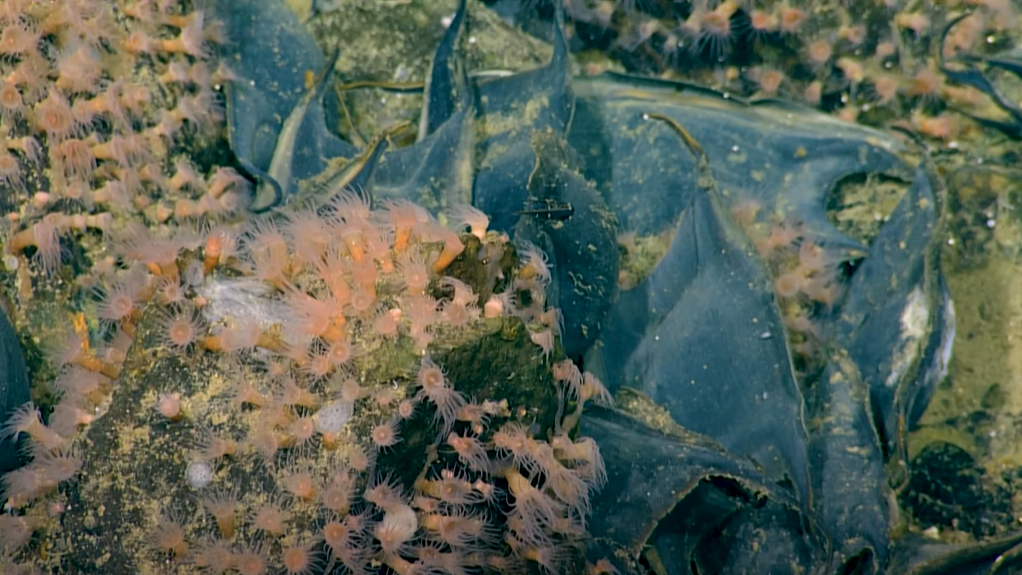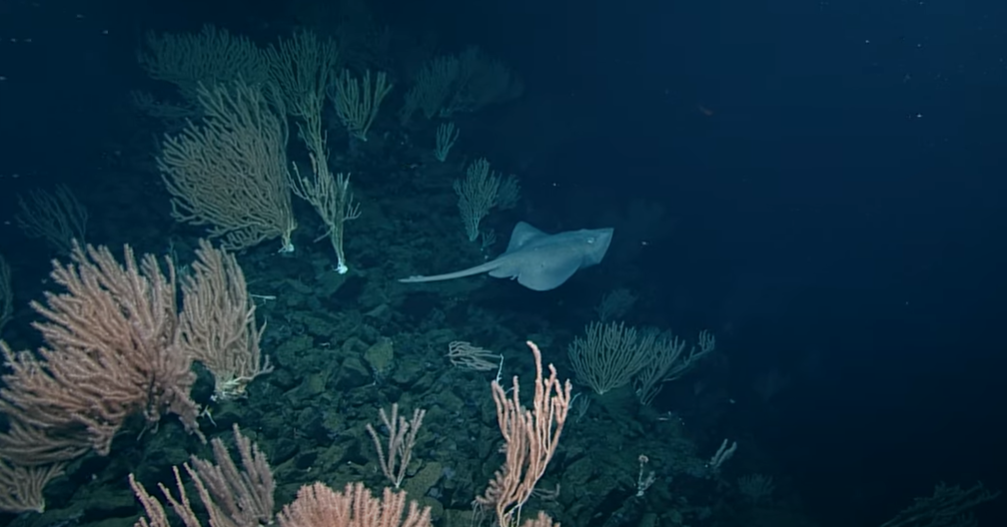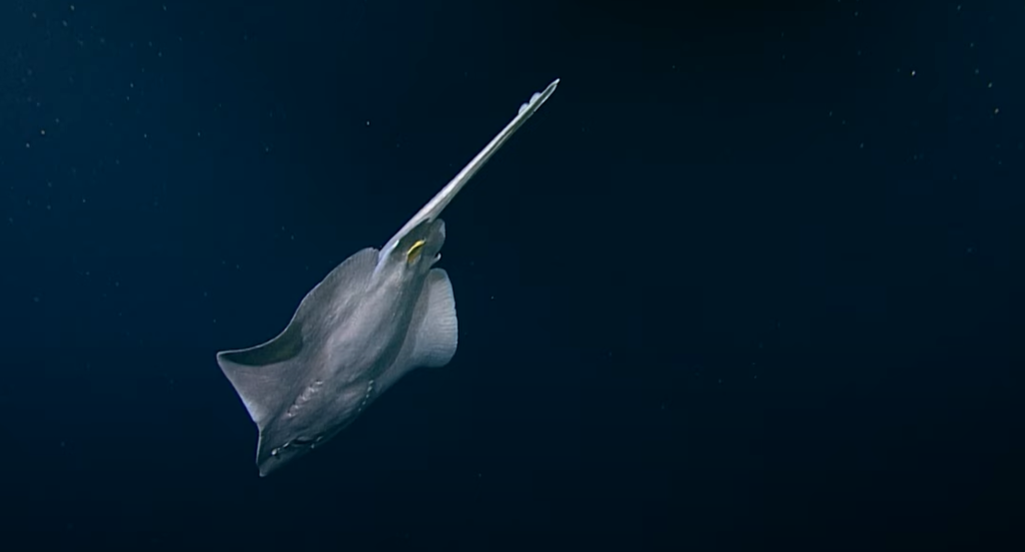The 2023 Northeast Pacific Deep-sea Expedition team has returned after two weeks at sea on what has been described as an unprecedented expedition.
For the first time, a science expedition has explored life at all three of BC’s deep-sea biodiversity hotspots—seamounts, vents, and seeps—discovering and documenting vibrant communities, unique phenomena, and captivating never-before-seen behaviours.
It is globally rare for these ecosystems to occur together, in such extremely high densities, and in domestic waters, but BC’s deep sea boasts an incredible concentration of seamounts, hydrothermal vents, and cold seeps owing to the region’s uniquely small, active, and nearshore tectonic plates.
The expedition’s objective focused on science that will contribute to a better understanding of these remarkable and fragile ecosystems and inform marine conservation planning.
However, the unexpected discoveries and personal encounters with deep-sea animals have left scientists and the global public speechless.
From LiveSciences by Sascha Pare
Researchers discovered that an underwater volcano nearly a mile beneath the surface off the Pacific coast of Canada is spouting hot fluid, providing a little-known species of skate with an ideal nursery.
The summit of the seamount was covered in thousands of giant, ravioli-shaped eggs.
(Image credit: NEPDEP 2023)
Researchers exploring an ancient, underwater volcano off the Pacific coast of Canada have discovered it is still active — and "covered" in thousands of giant eggs.
STRM bathymetry in the GeoGarage platform
Before the expedition, the team thought the volcano was extinct and the waters around it frigid.
However, they found the underwater mountain — which towers 3,600 feet (1,100 meters) above the seafloor — spouting warm water and encrusted with deep-sea corals.
The hot, mineral-rich fluid keeps the surrounding waters toasty, providing ideal conditions for some marine creatures to survive in the deep sea.
The researchers were even more surprised to see a Pacific white skate (Bathyraja spinosissima) weaving in and out of the fronds and laying eggs on the summit, nearly a mile (1.5 kilometers) beneath the surface.
"It's a really special place on top of a really special place," Cherisse Du Preez, a deep-sea marine biologist with Fisheries and Oceans Canada and principal investigator on the expedition, told Live Science in an email.
"The only previous finding of a Pacific white skate nursery was in the Galapágos and I think was on the order of a dozen or two eggs."
However, they found the underwater mountain — which towers 3,600 feet (1,100 meters) above the seafloor — spouting warm water and encrusted with deep-sea corals.
The hot, mineral-rich fluid keeps the surrounding waters toasty, providing ideal conditions for some marine creatures to survive in the deep sea.
The researchers were even more surprised to see a Pacific white skate (Bathyraja spinosissima) weaving in and out of the fronds and laying eggs on the summit, nearly a mile (1.5 kilometers) beneath the surface.
"It's a really special place on top of a really special place," Cherisse Du Preez, a deep-sea marine biologist with Fisheries and Oceans Canada and principal investigator on the expedition, told Live Science in an email.
"The only previous finding of a Pacific white skate nursery was in the Galapágos and I think was on the order of a dozen or two eggs."
Researchers recorded the first ever footage of a female Pacific white skate (Bathyraja spinosissima) laying eggs.
Image credit: NEPDEP 2023 (Screenshot from YouTube)
Du Preez said the recently found skate nursery is many times the size of that.
"I'd estimate the summit of the seamount, which was covered in eggs, had — I don’t know — 100,000? A million?"
These eggs were large, Du Preez added, measuring about 1.5 feet (0.5 m) across.
The researchers were also the first ever to record footage of a Pacific white skate laying eggs, they said in a video of the expedition (see above)
Pacific white skates are little-known sea creatures related to sharks and rays.
They are among the deepest-dwelling species of skate, inhabiting depths between 2,600 and 9,500 feet (800 to 2,900 m) off the west coast of North and Central America, according to the IUCN Red List.
Adult females, which can grow up to 6.5 feet (2 m) long, lay rectangular eggs, which are known as "mermaid purses" because they look like little bags, Du Preez said.
The researchers were also the first ever to record footage of a Pacific white skate laying eggs, they said in a video of the expedition (see above)
Pacific white skates are little-known sea creatures related to sharks and rays.
They are among the deepest-dwelling species of skate, inhabiting depths between 2,600 and 9,500 feet (800 to 2,900 m) off the west coast of North and Central America, according to the IUCN Red List.
Adult females, which can grow up to 6.5 feet (2 m) long, lay rectangular eggs, which are known as "mermaid purses" because they look like little bags, Du Preez said.
Pacific white skates (Bathyraja spinosissima) are little-known marine creatures related to sharks and rays.
(Image credit: NEPDEP 2023 (Screenshot from YouTube))
(Image credit: NEPDEP 2023 (Screenshot from YouTube))
In 2018, researchers discovered several of these ravioli-shaped eggs close to hydrothermal vents near the Galapágos Islands, suggesting skate moms harnessed the volcanic warmth to incubate their eggs.
The new observations point to the same conclusion, Du Preez said.
"It takes four years for the young to develop," she explained.
"The warm water likely speeds up the gestation period of the eggs, resulting in more successful juveniles.
The shallow summit of the seamount is almost a coral garden and a safe nursery for juveniles to grow before they descend to the deep — it's a win-win."
The researchers will continue to monitor the egg-covered seamount, which is not currently protected and may be threatened by fishing activities.
The discovery shows just how important vent habitats are as nurseries and to the overall health of the ocean, Du Preez said.
"The warm water likely speeds up the gestation period of the eggs, resulting in more successful juveniles.
The shallow summit of the seamount is almost a coral garden and a safe nursery for juveniles to grow before they descend to the deep — it's a win-win."
The researchers will continue to monitor the egg-covered seamount, which is not currently protected and may be threatened by fishing activities.
The discovery shows just how important vent habitats are as nurseries and to the overall health of the ocean, Du Preez said.
Links :





No comments:
Post a Comment